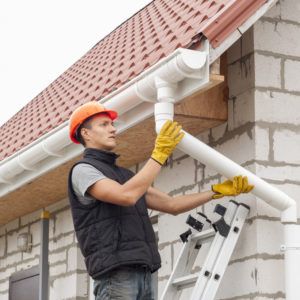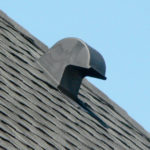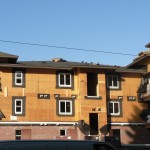 Your customers want their HVAC system to be efficient, and they look to their installer to make that happen. That’s why you need to understand all of the components of an energy-efficient home, especially an airtight building envelope. Snow, wind, rain, and hail pose a major threat to the integrity of your customer’s building envelope, which is why the roof and gutters are crucial.
Your customers want their HVAC system to be efficient, and they look to their installer to make that happen. That’s why you need to understand all of the components of an energy-efficient home, especially an airtight building envelope. Snow, wind, rain, and hail pose a major threat to the integrity of your customer’s building envelope, which is why the roof and gutters are crucial.
A watertight roof would be easy if there was no need for chimneys, vents or design features like dormers or skylights. Fortunately, there are ways to ensure that these features don’t harm the building envelope.
A standard residential roof is made up of trusses and beams, sheathing, underlay, flashing, and the covering. Trusses and beams form the frame of the roof, providing the structure and pitch. Sheathing is laid over top of the frame. Sheathing can be plywood or oriented strand board (OSB). Plywood is more expensive, but OSB is stronger. However plywood should be used on roofs with heavier coverings like slate or clay tiles.
Roof flashing, an important component of the roof drainage system, consists of thin strips of material, typically metal, like copper, aluminum, or galvanized steel. These metals are most common for residential flashing because they are inexpensive and resistant to corrosion. Flashing directs the flow of water away from the structure.
The different types of flashing include:
• chimney flashing installed along the side of the chimney
• continuous flashing protects the joint between a vertical wall and a roof
• drip edges are installed along the edges of rakes (the side of the gable) and eaves
• step flashing protects where the roof meets the side of dormers, chimneys, and some skylights
• valley flashing protects the valley where two roof planes meet
• vent pipe flashing which fits over vents and pipes
Not all vents require additional flashing. PrimexVents roof vents, for example, are designed to protect the building envelope. They are made from a single mold, which eliminates leaky joints.
Flashing is installed either underneath or over the top of the underlay, depending on its location. For example, drip edges are applied over the underlay along the rakes and underneath along the eaves.
Underlay is the first layer of waterproofing for your customer’s roof. Underlay is made of asphalt-saturated felt, rubberized asphalt, or non-bitumen synthetic. Underlay is now a required feature, but older homes may not have underlay on the roof.
Roof coverings are the part of the roof that is visible. The most common roof coverings for sloped roofs in the United States and Canada are asphalt shingles, clay tiles, and metal roofing. Wood shingles and slate are also popular. Flat roofs can be covered with a variety of materials, including rubber, modified bitumen, and tar and gravel.
Gutters and downspouts are the final pieces of an effective roof drainage system. Gutters need to be installed with the run directly below the drip edge flashing at all times. Each section needs joints free of leaks, and the gutter needs to be properly sloped toward the downspout.
Downspout filters need to be used to ensure that leaves and debris don’t clog the system. At the base of the downspout, drainage tiles need to be protected and kept free of debris so that they are able to direct water away from the building’s foundation where it can cause damage.
Gutters and roofs need to be inspected and maintained to ensure that they continue to protect the building envelope. Annual gutter cleaning is an obvious step, but they should also take the time for a visual survey of the roof and gutters after high winds.
For repairs, your customers need to be aware of the risk in using incompatible materials. For example, if they use galvanized steel on a copper roof, the copper will eat the steel. Materials such as caulking that are available at a big box hardware store may not be of sufficient quality for roof repairs. When in doubt, they should consult with a roofing expert.



